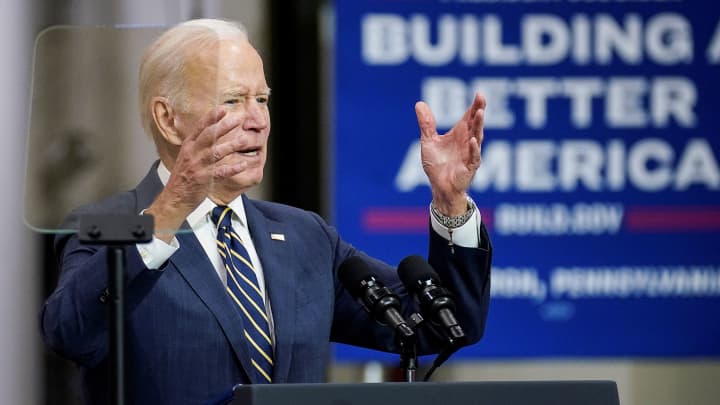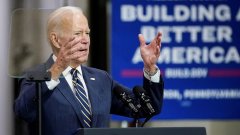
President Joe Biden announced Monday a $1.3 billion federal investment to build three new interstate power lines in an effort to upgrade the United States' outdated and transition it to clean energy.
The electric transmission lines will cross through six states: Arizona, Nevada, New Hampshire, New Mexico, Utah and Vermont.
The will bring wind power generated in New Mexico to Arizona cities. The will connect Canada's clean energy to New England and vice versa. The project will deliver renewable energy from the West to the Midwest.
Together, the three transmission lines will aim to supply 3.5 additional gigawatts of energy to the U.S. grid, which equates to powering 3 million homes, according to the Department of Energy. The department said the construction of the power lines would create roughly 13,000 new jobs.
The investment is a part of the Biden administration's larger effort to transition the U.S. to a carbon-free power sector by 2035.
That means the country's needs to be updated to get electricity from places where solar and wind power are abundant to locations where demand is high. (With fossil fuels, they can be transported first, then used to make electricity near where it's needed.)
In addition, the drive toward electrifying more of the economy — such as transportation — means that the U.S. needs to "more than double our grid capacity" overall, Secretary of Energy Jennifer Granholm said in a Monday statement.
U.S. energy infrastructure was already in need of an upgrade. Built in the 1960s and 1970s, the grid is aging. Electricity customers experienced an average of over seven hours of power outages in 2021, compared to just over three hours in 2013, according to the U.S. .
That degradation is exacerbated by increasingly regular extreme weather.
"America's existing energy infrastructure will not endure the continuing impacts of extreme weather events spurred by climate change," the Department of Energy in January 2022.
The $1.3 billion investment is a step in the right direction, but it does not mean three new power lines will magically appear. Electric transmission lines are to build and often run into delays and roadblocks in the planning and construction phases.
For example, even with the new federal funding, the Twin States project cannot begin construction until it receives all necessary approvals. The project's estimated timeline is to finish siting and permitting by 2026, complete construction in 2030 and be in service by 2031, according to Mary-Leah Messenger, a spokesperson at National Grid, the New England firm developing the Twin States line.
Still, Messenger said, "Today's decision from the DOE is a major step forward."
, along with the , have previously said they would work to expedite federal permitting processes to make grid infrastructure development more efficient.




